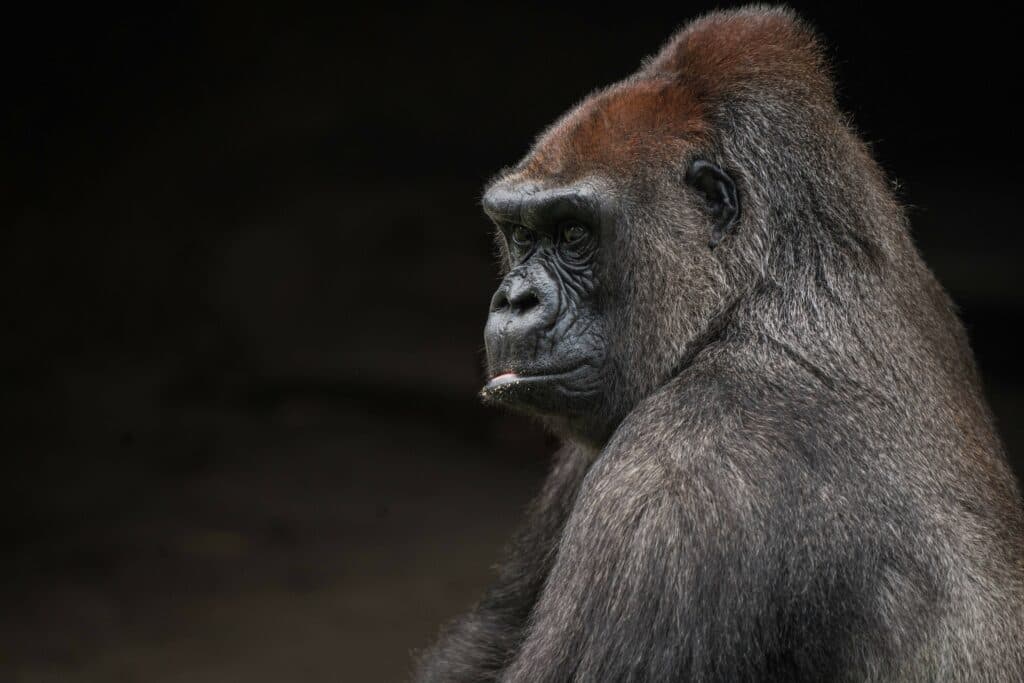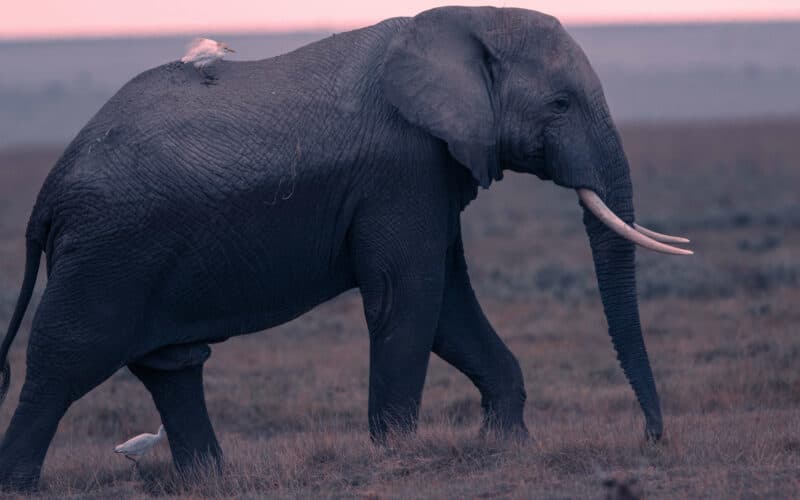Arguably one of the most breathtaking experiences when you visit the pearl, gorilla trekking is an inimitable jungle ecstasy that often leaves many in awe of just how similar these species are to humans.
Mountain gorillas are today earmarked as an endangered species, with only a few left on the planet. Uganda is one of only three destinations where you can get this grand experience.
The other two are the Democratic Republic of Congo and Rwanda. There are 18 known Gorilla families in Uganda, 17 are found in Bwindi Impenetrable National park, and one in Mgahinga Forest.
In Bwindi, there are four tracking sites that are Ruhija, Buhoma, Nkuringo and Rushaga. Each site has several gorilla families, each identifiable by a distinctive family name.
Cost of Permit
Uganda requires a trekking permit for visitors to have a chance to go gorilla trekking. Every year, the number of available permits fluctuates depending on the available research and the need for tourism income.
Therefore, booking your permit before you travel is advisable before setting off. Using the Uganda Wild Life Authority Site or a tour operator, you can book your ticket online.
The Uganda gorilla trekking permit costs $700 as of 1st July 2020. The gorilla trekking permit cost increase was communicated in 2019 by the Uganda Wildlife Authority in a bid to generate more revenue that was to be used for research, and conservation purposes, and to avail social services to communities that dwell around the protected areas.
Whenever you track gorillas in Uganda therefore, you contribute to the conservation of the endangered species of mountain gorillas as well as the infrastructural and social-economic transformation of the communities that dwell around Uganda’s national parks.
What is Included in the Gorilla Trekking Permit
The gorilla trekking permit covers a park entry fee to see mountain gorillas at Bwindi Impenetrable Forest. After paying the fee, expect admission into the park on your booked date.
At the park, you can expect to be accompanied by trained ranger guides and a police officer with a group of 8 other trekkers. The rangers will share a goldmine of information about gorillas and ensure you are both safe and able to see the gorillas.
When to Go Trekking
If you are planning to gorilla trek in Uganda, you must know which season offers the best trekking conditions. Needless to say, gorilla trekking is a year-round activity in Uganda since the changing seasons do not alter the gorillas’ movements.
You should not segregate when choosing a season because every season has its own merits and drawbacks. The best thing to do while choosing is to opt for the season you feel most comfortable with.
Uganda has two seasons namely; the dry season and the rainy wet season. The dry season happens twice every year; January and February and June to September.
The rainy seasons are; March and April, and then October and November. It is said that the best time to visit Uganda for Gorilla trekking is during the two dry seasons. However, some trekkers prefer to do their trekking during the wet season.
Reasons Why You Should Opt for The Wet or Dry Season of Gorilla Trekking in Uganda
While gorilla trekking in Uganda is a major activity, there is a lot more the country has to offer to make your trip unique and exciting.
This is why we believe you can go gorilla trekking in Uganda during both seasons. As we mentioned earlier, every season has its own merits and demerits. Here are some of the reasons to help you choose.
Dry Season
The dry season is dubbed the best season for gorilla trekking in Uganda. Most tourists come to Uganda during the dry spell to see gorillas in their natural habitats.
The dry season allows you to mix your gorilla trekking experience with other safari visits. Game viewing in Uganda’s savannah parks is best during and at the end of the dry seasons.
At this time, wildlife is concentrated making it easy to spot. You can immerse yourself in Uganda’s breathtaking countryside as you snap clear pictures of Africa’s “Big 5” mammals; elephants, leopards, rhinoceros, lions, and buffalos.
The dry season tends to be more expensive as it is the peak season making permits very hard to find especially for those who prefer making last-minute bookings. The vegetation is also sparse during this period meaning you will miss the beautiful green of Uganda’s countryside in the wet season.
We recommend that you book your permit months in advance if you plan to gorilla trek in Uganda during the dry season.
Wet Season
The wet seasons are also the low seasons of gorilla trekking in Uganda meaning there are fewer crowds and it is fairly easy to grab a last-minute gorilla trekking permit. If you do not shy away from more challenging excursions, grab your trekking boots and head on for this adventure. Traveling costs are much less during this period.
During the rainy seasons, the terrain is muddy making the ground more slippery and challenging to traverse. The alluring fresh smell of the ground after the rains is something to look up to during this season. The way it tickles your senses is a feeling you can never experience anywhere else in the world.
The rains in Uganda do not last all day long so your day may start with heavy rains before the sun rises three hours later and it is bright as though it has not rained. Trekkers are offered rain jackets to protect them against the rains.
The countryside is very green and colorful during this season. The trekking may be more difficult because of the rains.
Common Trekking Hubs in Uganda
Here are some of the popular trekking hubs in Uganda.
Gorilla Trekking in Bwindi
Gorilla trekking in Bwindi Impenetrable National Park is by far the flagship trekking experience. However, this is not the only hub in Uganda, there are other trekking options you may find interesting.
Chimpanzee Trekking in Bwindi
Gorillas are not the only primates you can see in Uganda, there are also chimpanzees in Bwindi Impenetrable. Unlike gorilla trekking, these excursions may be less exerting, take shorter periods, and do not require you to be particularly fit to participate.
Rwenzori Mountains
The Rwenzori Mountains are the country’s most challenging trekking hub. This is an alpine wonderland within Eastern Africa where vegetation morphs into glacial snowcapped peaks. The excursion to reach the top of the mountain can take up to 12 days. It is not for the tender-hearted.
Others
Other trekking hubs include; Murchison Falls National Park for chimpanzee trekking, Lakes Mutanda and Bunyonyi for simple walking trails that will take you into the countryside, and Semliki Valley for some forest trekking, and Queen Elizabeth National Park for chimpanzee trekking and birding.
Accommodation
When planning your trip, pick a site you wish to start at and book lodgings closest to the trails. Some common accommodations within the forest are Rushaga gorilla haven’s lodge, Trekkers tavern Lodge, Sanctuary Gorilla forest camp, Silverback lodge, and Buhoma lodge.
The best way to minimize costs is to choose a package covering whole family or group accommodation, food, and transport to and from. Most safari packages are reasonably priced with a three-day itinerary for a range of $400 per person, excluding trekking permits.














Responses (0 )